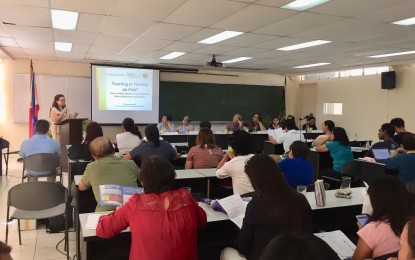By Cindy Ferrer/PNA

ILOILO CITY — The Bureau of Fisheries and Aquatic Resources in Western Visayas (BFAR-6) assured on Tuesday that the region continues to produce good volume of sardines every year.
Remia Aparri, Regional Director of BFAR-6, said in an interview that the region should not worry about shortage of sardines because the production of this kind of fish species is more than the demand of consumers in Western Visayas.
Based on the BFAR stock assessment data on the total landing volume of sardines, Aparri said there has been 28,523 metric tons of sardines produced in 2017, higher by 1.2 percent compared to the 28,185 metric tons of sardines produced in 2016.
In fact, the region is the second highest producer of sardines in the country next to Region 9 (Zamboanga Peninsula), Aparri said.
She said, “some of our production were even brought to Cebu and Navotas where there are post-harvest facilities.”
Aparri expressed confidence that the production will continue to increase this year because the fisherfolk and commercial fishing vessels are compliant to the closed season being implemented at the Visayan Sea.
The three-month closed season in the portion of the Visayan Sea for sardines, herrings and mackerels started November 15 and it will end on Feb. 15, 2019.
So far, Aparri said that not a single violation was so far reported since the start of the closed season.
“This is the effect of the increase in the level of awareness of the public on the closed season especially the fisherfolk because we have been educating them the importance of sardines and encouraging them to give time for this fish species to reproduce and grow,” she said.
Meanwhile, Aparri noted the decrease in the incidence of illegal fishing in the region as among the factors that contributed to the increased production of sardines.
“There are some fisherfolk using trawl (hulbot-hulbot) who voluntarily surrendered their gears to our personnel or the local government units,” she said.
Likewise, the commercial fishing vessels also collaborate with them and request assistance on how they could convert to legal gears.
As of this moment, Aparri said they are focusing their campaign on the local government units to regulate the use of fine fishnets because they have discovered that more than 30 percent of the fish are still small or juvenile after the closed season.
“Let us avoid catching them using fine fishnets so they could grow and have more value which will also provide more income to the fisherfolk,” she added.
Aparri was among the panel reactors in a forum at the University of the Philippines-Visayas (Iloilo City campus) dubbed “Feasting or Fasting on Fish: Filipino Public Opinion on our Fisheries, Marine Resources, and Oceans.”
The event was spearheaded by the UPV through the Institute of Fisheries Policy and Development Studies of the College of Fisheries and Ocean Sciences, in collaboration with Oceana Philippines.
